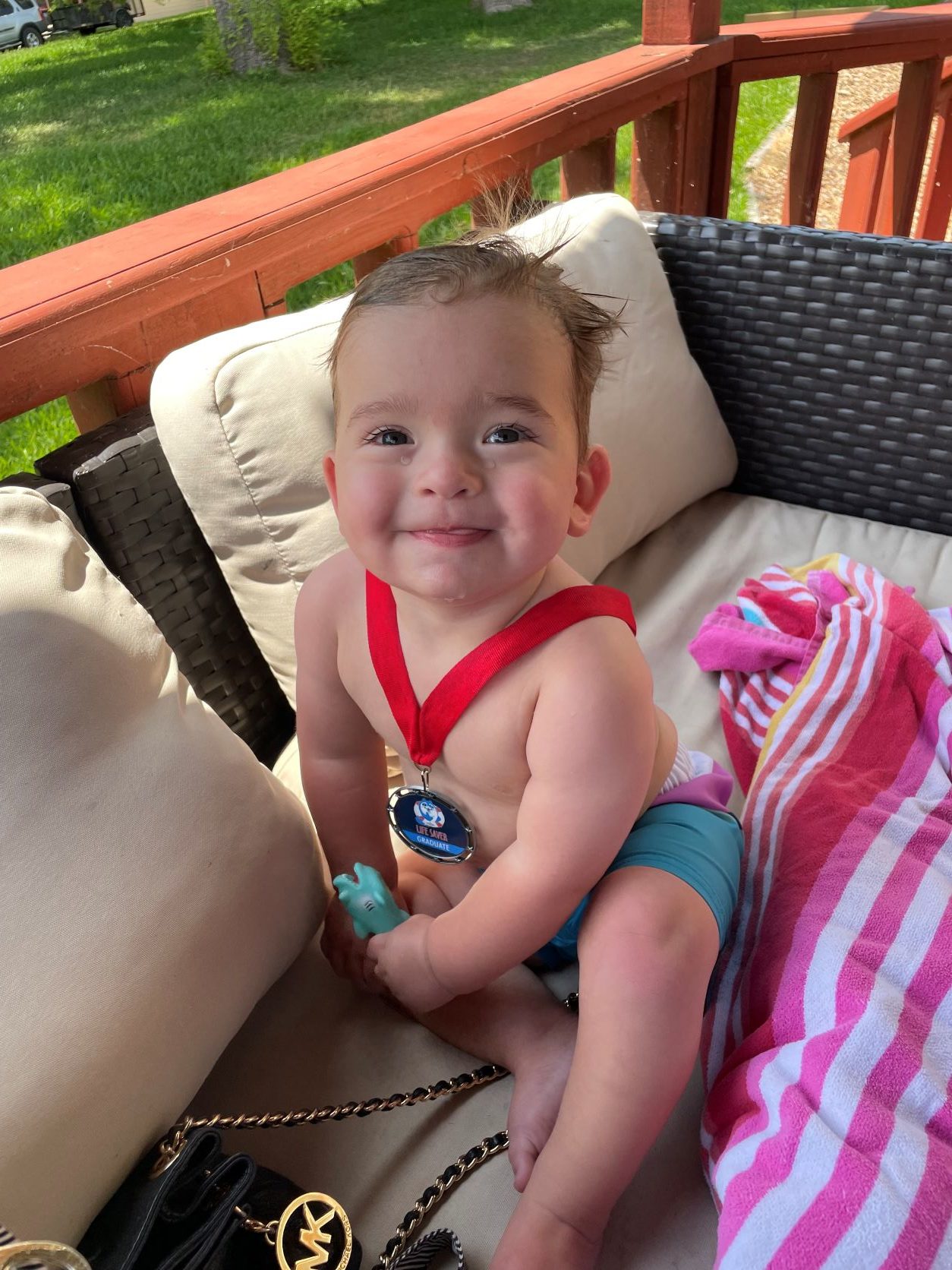
Introducing your infant to swimming can be an exciting and rewarding experience for both you and your little one. Water is naturally stimulating and engaging. Pool activities helps to promote physical, cognitive, and emotional development. However, the key to making these first few experiences positive is preparation, patience, and understanding. Here are some positive things to do when taking your baby to the swimming pool for their first few trips.
1. On Their First Few Trips, Start Slowly and Build Confidence
The first few times at the swimming pool can be overwhelming for an infant due to the new environment, sensations, and sounds. It’s essential to start slowly and let your baby adjust at their own pace. Begin by sitting by the edge of the pool or in the shallow end, where the water isn’t too deep. Hold your infant close to you, providing a sense of security. Gently splash a little water on their legs or feet to familiarize them with the sensation.
If your infant seems hesitant or scared, do not rush the process. Comfort them, use soothing words, and provide plenty of reassurance. Let them observe the environment from the safety of your arms before gradually introducing them to deeper water. Building trust in the water is crucial for creating a positive association with swimming.
2. Maintain Constant Eye Contact and Reassure
Eye contact is a powerful way to communicate trust and assurance to your infant. Maintaining regular eye contact as you guide them through their first swimming experiences can help them feel safe and connected to you. Smile, use gentle tones, and offer verbal affirmations like “You’re doing great!” or “This is fun!” Infants take cues from their parents, so if you are relaxed and positive, they are more likely to feel the same way. Your baby will watch you closely on these first few trips.
3. Make Use of Gentle and Fun Games
Introducing fun water-based activities can make the pool experience more engaging for your infant. Keep these games simple and gentle, considering their limited mobility and familiarity with the water. Here are a few positive games and activities that you can incorporate during these first few trips:
Sing songs together. Singing a familiar nursery rhyme like “The Wheels on the Bus” while moving gently through the water can be both entertaining and calming for your infant.
Splash with toys. Bring along waterproof toys, such as soft floating balls or rubber ducks. Encourage your baby to reach for or bat at them. These toys introduce fun while improving their motor skills and coordination.
Blow bubbles together. Blow bubbles near the surface of the water. Encourage your baby to watch or even try it themselves. This simple action helps them get used to water near their face without feeling submerged.
Kick those legs. Gently support your infant’s body in the water and encourage them to kick their legs. This helps them develop leg strength and coordination.
These playful games encourage motor development, sensory exploration, and early water comfort without pressuring your baby to do anything beyond their capability.
4. Maintain Proper Water Temperature
Infants are more sensitive to temperature changes than adults, so ensuring that the water is warm enough is crucial to their comfort. Ideally, the pool water should be between 85-87°F (29-31°C). Before entering the pool, dip your hand in the water to check its warmth. Cold water can lead to discomfort, shivering, and even fear of the water.
You can also try a baby-specific pool or class designed for younger swimmers. These often maintain optimal water temperatures for infants. Additionally, limit the time spent in the pool to about 20-30 minutes, especially for the first few visits, to prevent overexposure to cooler temperatures.
5. Ensure Safety at All Times
Safety is paramount when introducing your infant to swimming. Always stay within arm’s reach of your baby and hold them securely in the water. It’s important to remain vigilant, even in shallow water, as infants can lose balance and be overwhelmed by even the smallest waves or movements.
Consider dressing your baby in a swim diaper, and if needed, use a baby flotation device to provide extra support. However, do not rely solely on flotation devices—your attention and presence are the most important factors in keeping your baby safe.
Furthermore, familiarize yourself with the pool’s safety rules, and avoid crowded times when there may be more people in the water. A quieter environment is more conducive to a positive and calm experience for your infant.
6. Incorporate Physical Touch and Bonding
Physical closeness in the pool provides comfort and builds trust between you and your baby. Holding your baby close to your chest while moving through the water allows them to feel secure. Skin-to-skin contact in the water can also enhance bonding and help soothe any initial nervousness they may feel.
The gentle rocking motion of floating or moving in the water mimics the sensation your baby experienced in the womb, offering familiarity in an otherwise new and unfamiliar setting.
7. Be Patient and Consistent On Their First Few Trips
Your infant’s first swimming experiences may not go perfectly as planned. Some babies may love the water immediately, while others might take several sessions to warm up to it. The key is patience and consistency. Try to make swimming a regular part of your routine, even if it’s just once a week. This consistency helps your baby feel more familiar with the water over time, reducing any initial anxieties.
If your baby is upset or uncomfortable, it’s perfectly okay to step out of the pool and try again later. Avoid pushing them too hard, and always respect their cues. Over time, your patience will help your baby grow more confident and comfortable in the water.
Taking your baby to a swimming pool for their first few trips is a wonderful opportunity for bonding, growth, and development. By starting slowly, maintaining constant reassurance, incorporating fun games, ensuring safety, and being patient, you can create a positive and enjoyable swimming experience for your little one. The early introduction to water, combined with gentle guidance and support, will lay a strong foundation for a lifelong love of swimming and water activities.
Reach Out to Life Saver Survival Swim School for Help
Our school has been helping new mother’s and father’s in this area of Houston for 20 years. Our school teaches infants 6 months and older to not only enjoy pools of water, but also how to survive. We teach them to float and swim! Children can drown in very shallow pools of water… we teach them to survive in them.
If you have any questions, call our owner Bonnie at (832) 366-3008. Or, of course, you can email her.

